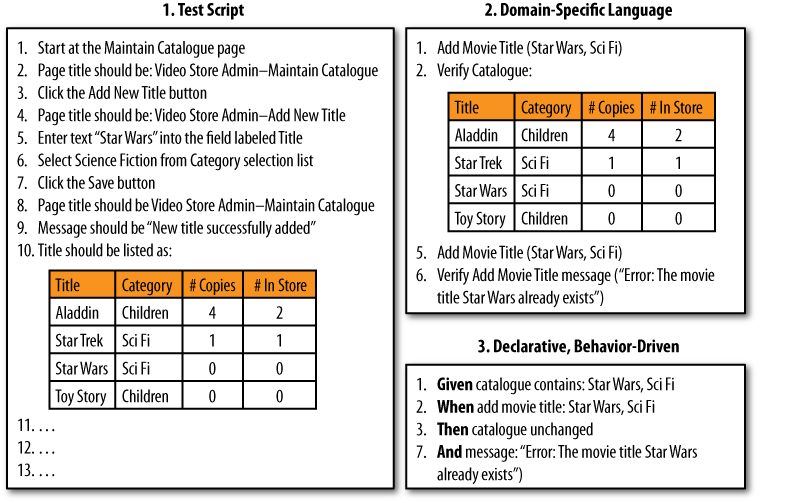Readable Examples
It is essential that an Example can be clearly understood by a number of different audiences:
- Nontechnical subject matter experts
These people verify that the Example is a correct and complete specification.
- Technical team
These team members use Examples to drive their design and coding work. Toolsmiths read an Example to automate it; programmers read an Example to develop correct system code; operations support reads an Example to fix or enhance a specific part of the system.
A readable Example is all of the following (Andrea 2005):
Declarative: expresses âwhat,â not âhowâ
Succinct: includes only what is necessary
Unambiguous: two people understand it the same way
Autonomous: stands alone; does not depend on other Examples
Sufficient: full coverage in minimal scenarios
Locatable: organized and searchable
In Figure 14-2, the sample labeled âTest Scriptâ is a traditional detailed functional test script, which is not what we are aiming for as a requirement specification: the tactical user interaction details obscure the business rule that needs to be expressed (in other words, the âhowâ eclipses the âwhatâ).

Figure 14-2. Toward readable specifications
Creating a Domain-Specific Testing Language (DSTL) makes this same script more readable, provided the vocabulary of the specification is declarative and is expressed as business domain goals and real-world objects. ...
Get Beautiful Testing now with the O’Reilly learning platform.
O’Reilly members experience books, live events, courses curated by job role, and more from O’Reilly and nearly 200 top publishers.

